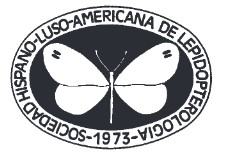Anthropic disturbance affecting the patterns of diversity in the Mountain Satyrinae Pronophilina Reuter, 1896 in an upper Andean Forest in Colombia (Lepidoptera: Nymphalidae)
DOI:
https://doi.org/10.57065/shilap.263Keywords:
Lepidoptera, Nymphalidae, Satyrinae, habitat fragmentation, richness, synanthropic species, endemism, altitudinal variation, ColombiaAbstract
Lepidoptera of the subtribe Pronophilina Reuter, 1896 are widely distributed in the Andes, specifically in high Andean/Paramo ecosystems. These ecosystems in the last decades have severely suffered from diverse anthropic activities, managing to affect the biocenosis-biotope relationship. Therefore, it is highly important to uncover the patterns of diversity and distribution of the species that are related in a disturbed area, in order to implement conservation strategies. Therefore, in the present study, the effect of anthropic disturbance on the diversity patterns of Pronophilina butterflies in a high Andean Forest in the village of Frailejonal, La Calera, Colombia was analyzed. Samples were conducted using standard passive and active methods for ecological studies in butterflies. Three study stations were established according to the degree of habitat disturbance: “High”, “Medium”, and “Low”. To analyze the diversity patterns, Hill number estimates (based on effective species) were performed and species turnover was analyzed by a Bray Curtis similarity analysis corroborated by an NMDS test, based on this it was found that this group of butterflies present less richness and the greater presence of dominant species in the zone of “High” disturbance. In turn, in the “Medium” and “Low” states, there was a greater diversity of butterflies. Panyapedaliodes drymaea (Hewitson, 1858), Pedaliodes phaea ochrotaenia (C. Felder & R. Felder, 1867) and Pedaliodes polla Thieme, 1905 are proposed as synanthropic species, given their high abundance in disturbed areas, since they appear to respond better to anthropic processes. However, endemic species of Pronophilina are reported such as Lymanopoda samius Westwood, 1851, Manerebia apiculata (C. Felder & R. Felder, 1867), and Manerebia levana (Godman, 1905), highlighting the importance of generating ecological restoration and conservation strategies in the study area.
Downloads
Global Statistics ℹ️
|
1028
Views
|
413
Downloads
|
|
1441
Total
|
|
References
Adams, M. J. (1985). Speciation in the pronophiline butterflies (Satyridae) of the northern Andes. Journal of Research on the Lepidoptera, (suppl 1), 33-49.
Andrade, M. G., & Amat, G. (1996). Estudio regional de las mariposas altoandinas en la cordillera Oriental de Colombia. Insectos de Colombia, 1, 149-180.
Andrade-C., M. G. (2011). Estado del conocimiento de la biodiversidad en Colombia y sus amenazas. Consideracionespara fortalecer la interacción ambiente-política. Revista de la Academia Colombiana de Ciencias Exactas, Físicas y Naturales, 35(137), 491-507.
Andrade-C., M. G., Henao, E. R., & Triviño, P. (2013). Técnicas y procesamiento para la recolección, preservación y montaje de Mariposas en estudios de biodiversidad y conservación. (Lepidoptera: Hesperioidea-Papilionoidea). Revista Academia Colombiana Ciencias Exactas, 37(144), 311-325. https://doi.org/10.18257/raccefyn.12 DOI: https://doi.org/10.18257/raccefyn.12
Andrade, J. E. (2019). Actualización del perfil ambiental del municipio de la Calera, Cundinamarca. Universidad Universidad Santo Tomas. https://repository.usta.edu.co/bitstream/handle/11634/21459/2020jenyferandrade.pdf?sequence=1&isAllowed=y
Álvarez-Hincapié, C. F., Clavijo, A., Rojas, H., Uribe, S., Pyrcz, T. W., & Marín, M. A. (2017). Aporte del área de influencia del páramo de Belmira (Santa Inés) a la diversidad regional de Pronophilina (Lepidoptera: Satyrinae) del norte de los Andes. Revista Mexicana de Biodiversidad, 88(2), 402-409. DOI: https://doi.org/10.1016/j.rmb.2017.03.007
Ávila-R., L., & Triviño, P. (2019). Descripción del hábitat de cuatro especies del género Lymanopoda (Lepidoptera: Nymphalidae: Satyrinae) en áreas de páramo de Colombia. Acta Biológica Colombiana, 24(1), 125-138. DOI: https://doi.org/10.15446/abc.v24n1.70285
Brehm, G., Sõssenbach, D., & Fiedler, K., 2003b. Unique elevational diversity patterns of geometrid moths in an Andean montane rainforest. Ecography, 26, 456-466. DOI: https://doi.org/10.1034/j.1600-0587.2003.03498.x
Brown, J. H. (1989). Patterns, modes and extent of invasions by vertebrates. In J. A. Drake, H. A. Mooney, F. Di Castri, R. H. Groves, F. J. Kruger, M. Rejmánek & M. Williamson. Biological invasions: A global perspective (pp. 85-109). Chichester Wiley.
Brown, J. R., & Freitas, A. V. L. (2000). Atlantic Forest butterflies: indicators for landscape conservation. Biotropica, 32, 934-956. DOI: https://doi.org/10.1111/j.1744-7429.2000.tb00631.x
Carrero, D., Sánchez, L. R., & Tobar-López, D. (2013). Diversidad y distribución de mariposas diurnas en un gradiente altitudinal en la región nor-oriental andina de Colombia. Boletín Científico Centro de Museos Historia Natural, 17(1), 168-188.
Casas-Pinilla, L. C., Mahecha-J., O., Dumar, J. C., & Ríos-Málaver, I. C. (2017). Diversidad de mariposas en un paisaje de bosque seco tropical, en la Mesa de los Santos, Santander, Colombia (Lepidoptera: Papilionoidea). SHILAP Revista de lepidopterología, 45(177), 83-108.
Casner, K. L., & Pyrcz, T. W. (2010). Patterns and timing of diversification in a tropical montane butterfly genus, Lymanopoda (Nymphalidae, Satyrinae). Ecography, 33(2), 251-259. DOI: https://doi.org/10.1111/j.1600-0587.2010.06306.x
Castro, J., Vanegas, D., Ramírez, E., Sotelo, J., & Pinzón, E. (2009). Del estado plan de desarrollo y el plan de ordenamiento territorial del municipio la calera en el departamento de Cundinamarca. Universidad Distrital Francisco José de Caldas, Facultad del Medio Ambiente y Recursos Naturales.
Chao, A., & Jost, L. (2012). Coverage-based rarefaction and extrapolation: standardizing samples by completeness rather than size. Ecology, 93, 2533-2547. http://dx.doi.org/10.1890/11-1952.1 DOI: https://doi.org/10.1890/11-1952.1
Chao, A., Gotelli, N. J., Hsieh, T. C., Sander, E. L., Ma, K. H., Colwell, R. K., & Ellison, A. M. (2014). Rarefaction and extrapolation with Hill numbers: a framework for sampling and estimation in species diversity studies. Ecological Monographs, 84(1), 45-67. DOI: https://doi.org/10.1890/13-0133.1
Chao, A., & Shen, T. J. (2003). Nonparametric estimation of Shannon’s index of diversity when there are unseen species in the sample. Environmental and Ecological Statistics, 10, 429-433. DOI: https://doi.org/10.1023/A:1026096204727
Cleary, D. F. R., & Genner, M. J. (2006). Diversity patterns of Bornean butterfly assemblages. Biodiversity and Conservation, 15, 503-524. DOI: https://doi.org/10.1007/978-1-4020-5204-0_31
Connell, M. L. (1978). Diversity in tropical rain forests and coral reefs. Science, 199, 1302-1310. DOI: https://doi.org/10.1126/science.199.4335.1302
Cruz-Cabrera, V. D., & Contreras, M. (2019). Alteraciones ambientales por perturbaciones antropogénicas en dos fragmentos de bosques: un sistema de agroforestería y un bosque natural secundario en regeneración. Orbis Cognita, 3(2), 57-72.
De Palma, A., Dennis, R. L., Brereton, T., Leather, S. R., & Oliver, T. H. (2017). Large reorganizations in butterfly communities during an extreme weather event. Ecography, 40(5), 577-585. DOI: https://doi.org/10.1111/ecog.02228
Ellison, A. M. (2010). Partitioning diversity. Ecology, 91, 1962-1963. DOI: https://doi.org/10.1890/09-1692.1
Enkhtur, K., Pfeiffer, M., Lkhagva, A., & Boldgiv, B. (2017). Response of moths (Lepidoptera: Heterocera) to livestock grazing in Mongolian rangelands. Ecological Indicators, 72, 667-674. DOI: https://doi.org/10.1016/j.ecolind.2016.08.053
Fahring, L. (2003). Effects of habitat fragmentation on biodiversity. Review Ecology, evolution and Systematic, 34, 487-515. DOI: https://doi.org/10.1146/annurev.ecolsys.34.011802.132419
Fonseca-F., A. N., & Mahecha-J., Ó. (2018). Contribución al estudio de los arácnidos (Arachnida) asociados a un bosque de galería en Meta (Colombia). Revista ibérica de aracnología, 33, 123-128.
Forman, R. T. (1995). Some general principles of landscape and regional ecology. Landscape Ecology, 10(3), 133-142. DOI: https://doi.org/10.1007/BF00133027
Gonzales-Montaña, L. A. (2010). Las mariposas Satyrinae (Lepidoptera: Papilionoidea: Nymphalidae) en dos sectores de la Cordillera Oriental de Colombia con anotaciones ecológicas. Revista Nicaraguense de Entomología, 70, 1-20.
Gotelli, N. J., & Colwell, R. K. (2011). Estimating species richness. In A. E. Magurran & B. J. Mcgill. Biological diversity: frontiers in measurement and assessment (pp. 39-54). Oxford University Press.
Gotelli, N. J., & Chao, A. (2013). Measuring and estimating species richness, species diversity, and biotic similarity from sampling data. In S. A., Levin. The encyclopedia of biodiversity, 5 (pp. 195-211) Academic Press. DOI: https://doi.org/10.1016/B978-0-12-384719-5.00424-X
Greeney, H. F., Pyrcz, T. W., Devries, P. J., & Dyer, L. A. (2009). The Early Stages of Pedaliodes poesia (Hewitson, 1862) in Eastern Ecuador (Lepidoptera: Satyrinae: Pronophilina). Journal of Insect Science, 9(38), 1-9. DOI: https://doi.org/10.1673/031.009.3801
Grytnes, J. A., Beaman, J. H., Romdal, T. S., & Rahbek, C. (2008). The mid-domain effect matters: simulation analyses of range-size distribution data from Mount Kinabalu, Borneo. Journal of Biogeography, 35, 2138-2147. DOI: https://doi.org/10.1111/j.1365-2699.2008.01952.x
Guevara, M., Hartmann, D., & Mendoza, M. (2016). diverse: An R Package to Analyze Diversity in Complex Systems. The R Journal, 8(2), 60-78. DOI: https://doi.org/10.32614/RJ-2016-033
Henao-Bañol, E. R., Páez, A., & Rodríguez-M., J. V. (2018). Inventario de mariposas diurnas (Lepidoptera: Hesperioidea-Papilionoidea) de la reserva forestal productora protectora de la cuenca alta del río Bogotá (RFPP-CARB). Boletín Científico. Centro de Museos. Museo de Historia Natural, 22(2), 144-171. https://dx.doi.org/10.17151/bccm.2018.22.2.11 DOI: https://doi.org/10.17151/bccm.2018.22.2.11
Henao-B., E., & Stiles, F. G. ( 2018). Un inventario de las mariposas diurnas (Lepidoptera: Hesperioidea-Papilionoidea) de dos reservas altoandinas de la cordillera oriental de Colombia. Revista de la Facultad de Ciencias, 7(1), 71-87. DOI: https://doi.org/10.15446/rev.fac.cienc.v7n1.67837
Hill, M. O. (1973). Diversity and evenness: a unifying notation and its consequences. Ecology, 54, 427-432. DOI: https://doi.org/10.2307/1934352
Hsieh, T. C., Ma, K. H., & Chao, A. (2016). iNEXT: An R package for rarefaction and extrapolation of species diversity (Hill numbers). Methods in Ecology and Evolution, 7, 1451-1456. doi:10.1111/2041-210X.12613 DOI: https://doi.org/10.1111/2041-210X.12613
Jaime-Escalante, N. G., Figueroa-Esquivel, E. M., Villaseñor-Gómez, J. F., Jacobo-Sapien, E. A., & Puebla-Olivares, F. (2016). Distribución altitudinal de la riqueza y composición de "ensamblajes" de aves en una zona montañosa al sur de Nayarit, México. Revista de Biología Tropical, 64(4), 1537-1551. https://dx.doi.org/10.15517/rbt.v64i4.20255 DOI: https://doi.org/10.15517/rbt.v64i4.20255
Jost, L. (2006). Entropy and diversity. Oikos, 113, 363-375. DOI: https://doi.org/10.1111/j.2006.0030-1299.14714.x
Kindt, R., & Coe, R. (2005). Tree diversity analysis. A manual and software for common statistical methods for ecological and biodiversity studies. World Agroforestry Centre (ICRAF).
Krieger, R. S., Salcedo, M., Escobar, J., & Ríos, C. (2000). Colombia Megadiversa: cinco años explorando la riqueza de un país biodiverso. Instituto de Investigación de Recursos Biológicos Alexander von Humboldt.
Lamas, G., Viloria, A. L., & Pyrcz, T. W. (2004). Subtribe Pronophilina. In G. Lamas. Atlas of Neotropical Lepidoptera, Checklist: Part 4A, Hesperioidea-Papilionoidea (pp. 206-215). Association for Tropical Lepidoptera.
Macarthur, R. H., & Wilson, E. O. (1967). The theory of island biogeography. Princeton University Press.
Mahecha-Jiménez, O. J., Dumar-Rodríguez, J. C., & Pyrcz, T. W. (2011). Efecto de la fragmentación del hábitat sobre las comunidades de Lepidoptera de la tribu Pronophilini a lo largo de un gradiente altitudinal en un bosque andino en Bogotá (Colombia) (Lepidoptera: Nymphalidae, Satyrinae). SHILAP Revista de lepidopterología, 39(153), 117-126.
Mahecha-J., O., & Díaz-S, V. (2015). Aproximación a la diversidad taxonómica de las mariposas diurnas (Lepidoptera: Papilionoidea) en la Vereda Cafrería, Municipio Icononzo, Tolima. Revista Científica Unincca, 20(2), 83-91.
Mahecha, O., Garlacz, R., Andrade, M. G., Prieto, C., & Pyrcz, T. (2019). Island biogeography in continental areas: inferring dispersal based on distributional patterns of Pronophilina butterflies (Nymphalidae: Satyrinae) in the north Andean massifs. Revista Mexicana de Biodiversidad, 90, e902796. http://dx.doi.org/10.22201/ib.20078706e.2019.90.2796 DOI: https://doi.org/10.22201/ib.20078706e.2019.90.2796
Marín, M. A., Álvarez, C. F., Giraldo, C. E., Pyrcz, T. W., Uribe, S. I., & Vila, R. (2014). Mariposas en un bosque de niebla andino periurbano en el valle de Aburrá, Colombia. Revista Mexicana de Biodiversidad, 85(1), 200-208. DOI: https://doi.org/10.7550/rmb.36605
Marín, M. A., Giraldo, C. E., Marín, A. L., Álvarez, C. F., & Pyrcz, T. W. (2015). Differences in butterfly (Nymphalidae) diversity between hillsides and hilltop forest patches in the northern Andes. Studies on Neotropical Fauna and Environment, 50(3), 194-203. DOI: https://doi.org/10.1080/01650521.2015.1099379
Martins, L. P., Junior, A., Da-Costa, E., Martins, A. R. P., Duarte, M., & Azevedo, G. G. (2017). Species diversity and community structure of fruit-feeding butterflies (Lepidoptera: Nymphalidae) in an eastern Amazonian Forest. Papéis Avulsos de Zoologia, 57(38), 481-489. DOI: https://doi.org/10.11606/0031-1049.2017.57.38
Montero, F., Moreno, M., & Gutiérrez, L. C. (2009). Mariposas (Lepidoptera: Hesperioidea y Papilionoidea) asociadas a fragmentos de bosque seco tropical en el departamento del Atlántico, Colombia. Boletín Científico del Museo de Historia Natural, 13(2), 157-173.
Montero, F., & Ortiz, M. (2013). Aporte al conocimiento para la conservación de las mariposas (Hesperioidea y Papilionoidea) en el Páramo del Tablazo, Cundinamarca (Colombia). Boletín Científico Centro de Museos de Historia Natural, 17(2), 197-227.
Moreno, C. E., Barragán, F., Pineda, E., & Pavón, N. P. (2011). Reanalizando la diversidad alfa: alternativas para interpretar y comparar información sobre comunidades ecológicas. Revista Mexicana de Biodiversidad, 82, 1249-1261. DOI: https://doi.org/10.22201/ib.20078706e.2011.4.745
Murillo-P., A., Robayo-Ch., G., & Mahecha-J., O. (2018). Mariposas asociadas a humedales en el municipio de Soacha, Cundinamarca, Colombia (Lepidoptera: Papilionoidea). SHILAP Revista de lepidopterología, 46(182), 207-219.
Oksanen, J., Guillaume, F., Blanchet, Friendly, B. M., Kindt, R., Legendre, P., Mcglinn, D., Minchin, P. R, O'Hara, R. B., Simpson, G. L., Solymos, P. M., Stevens, H. H., Szoecs, E., & Wagner, H. (2019). Vegan: Community Ecology Package. R package version 2.5-6. https://cran.r-project.org/package=vegan
Oliver, T., Roy, D. B., Hill, J. K., Brereton, T., & Thomas, C. D. (2010). Heterogeneous landscapes promote population stability. Ecology Letters, 13, 473-484. DOI: https://doi.org/10.1111/j.1461-0248.2010.01441.x
Ospina, L. A., García. J. F., Villa, F. A., & Reinoso, G. (2010). Mariposas Pieridae (Lepidoptera: Papilionoidea) de la cuenca del Río Coello (Tolima), Colombia. Acta Biológica, 32(93), 173-188.
Pimm, S. L., Jenkins, C. N., Abell, R., Brooks, T. M., Gittleman, J. L., Joppa, L. N., Raven, P. H., Roberts, C. M., & Sexton, J. O. (2014). The biodiversity of species and their rates of extinction, distribution, and protection. Science, 344, 987-997. DOI: https://doi.org/10.1126/science.1246752
Prieto, C. H. (2003). Satírinos (Lepidoptera, Nymphalidae, Satyrinae) del Parque Nacional Natural Munchique. Diversidad de especies y distribución altitudinal. Revista Colombiana de Entomología, 29, 203-210. DOI: https://doi.org/10.25100/socolen.v29i2.9606
Primack, R. B. (2006). Essentials of Conservation Biology. Habitat destruction. Ecoscience, 14, 133-134. https://doi.org/10.2980/1195-6860
Pyrcz, T. W., & Wojtusiak, J. (2002). The vertical distribution of pronophiline butterflies (Nymphalidae, Satyrinae) along a elevational transect in Monte Zerpa (Cordillera de Mérida, Venezuela) with remarks on their diversity and parapatric distribution. Global Ecology Biogeography, 11, 211-221. DOI: https://doi.org/10.1046/j.1466-822X.2002.00285.x
Pyrcz, T. W. (2004). Pronophiline butterflies of the highlands of Chachapoyas in northern Peru: faunal survey, diversity, and distribution patterns (Lepidoptera, Nymphalidae, Satyrinae). Genus, 15, 455-622.
Pyrcz, T. W., & Rodríguez, G. (2007). Mariposas de la tribu Pronophilini en la cordillera occidental de los andes de Colombia (Lepidoptera: Nymphalidae, Satyrinae). SHILAP Revista de lepidopterología, 35(140), 455-489.
Pyrcz, T. W., & Viloria, A. (2007). Erebiine and pronophiline butterflies of the Serranía del Tamá, Venezuela-Colombia border (Lepidoptera: Nymphalidae: Satyrinae). Tropical Lepidoptera, 15(1-2), 18-52.
Pyrcz, T. W., Wojtusiak, J., & Garlacz, R. (2009). Diversity and distribution patterns of Pronophilina butterflies (Lepidoptera: Nymphalidae: Satyrinae) along an altitudinal transect in north-western Ecuador. Neotropical Entomology, 38(6), 716-726. DOI: https://doi.org/10.1590/S1519-566X2009000600003
Pyrcz, T. W., Viloria, A. L., Lamas, G., & Boyer, P. (2011). La fauna de mariposas de la subfamilia Satyrinae del macizo del Ampay (Perú): diversidad, endemismo y conservación (Lepidoptera: Nymphalidae). SHILAP Revista de lepidopterología, 39(154), 205-232.
Pyrcz, T. W., & Garlacz, R. (2012). The presence-absence situation and its impact on the assemblage structure and interspecific relations of Pronophilina butterflies in the Venezuelan Andes (Lepidoptera: Nymphalidae). Neotropical entomology, 41(3), 186-195. DOI: https://doi.org/10.1007/s13744-012-0031-2
Pyrcz, T. W., Prieto, C., Viloria, A. L., & Andrade-C., G. (2013). New species of high elevation cloud forest butterflies of the genus Pedaliodes Butler from the northern Colombian Andes (Lepidoptera, Nymphalidae, Satyrinae). Zootaxa, 3716(4), 528-538. DOI: https://doi.org/10.11646/zootaxa.3716.4.2
Pyrcz, T. W., Clavijo, A., Uribe, S., Marin, M. A., Alvarez, C. F., & Zubek, A. (2016). Páramo de Belmira as an important centre of endemism in the northern Colombian Andes: New evidence from Pronophilina butterflies (Lepidoptera: Nymphalidae, Satyrinae, Satyrini). Zootaxa, 4179(1), 77-102. DOI: https://doi.org/10.11646/zootaxa.4179.1.3
R Core Team (2019). R: A language and environment for statistical computing. R Foundation for Statistical Computing, Vienna, Austria. https://www.R-project.org/
Ramírez-Restrepo, L., & Macgregor-Fors, I. (2017). Butterflies in the city: a review of urban diurnal Lepidoptera. Urban ecosystems, 20(1), 171-182. DOI: https://doi.org/10.1007/s11252-016-0579-4
Spaniol, R. L., Duarte, L. D. S., Mendonça Jr, M. D. S., & Iserhard, C. A. (2019). Combining functional traits and phylogeny to disentangling Amazonian butterfly assemblages on anthropogenic gradients. Ecosphere, 10(8), e02837. DOI: https://doi.org/10.1002/ecs2.2837
Spaniol, R. L., Mendonça, M. D. S., Hartz, S. M., Iserhard, C. A., & Stevens, M. (2020). Discolouring the Amazon Rainforest: how deforestation is affecting butterfly coloration. Biodiversity and Conservation, 29, 2821-2838. https://doi.org/10.1007/s10531-020-01999-3 DOI: https://doi.org/10.1007/s10531-020-01999-3
Tews, J., Brose, U., Grimm, V., Tielbörger, K., Wichmann, M. C., Schwager, M., & Jeltsch, F. (2004). Animal species diversity driven by habitat heterogeneity/diversity: the importance of keystone structures. Journal of biogeography, 31, 79-92. DOI: https://doi.org/10.1046/j.0305-0270.2003.00994.x
Uehara-Prado, M., Brown Jr., K. S., & Freitas, A. V. L. (2007). Species richness, composition, and abundance of fruit-feeding butterflies in the Brazilian Atlantic Forest: comparison between a fragmented and a continuous landscape. Global Ecology and Biogeography, 16, 43-54. DOI: https://doi.org/10.1111/j.1466-8238.2006.00267.x
Urbano, P., Munevar, J., Mahecha-J., O., & Hincapié, E. (2014). Diversidad y estructura de las comunidades de Lepidoptera en la zona del ecotono entre el piedemonte llanero y sabana inundable en Casanare-Colombia (Lepidoptera: Papilionoidea). SHILAP Revista de lepidopterología, 42(167), 433-437.
Urbano, P., Mahecha-J., O., Suárez, E., Izquierdo, V., & Díaz-S, V. (2018). Variación temporal del ensamblaje de mariposas asociadas a la Cuenca de la Calaboza, Yopal, Casanare, Colombia (Lepidoptera: Papilionoidea). SHILAP Revista de lepidopterología, 46(184), 533-550.
Viloria, A. L. (2007). The Pronophilina: Synopsis of their biology and systematics (Lepidoptera: Nymphalidae: Satyrinae). Tropical Lepidoptera Research, 15(1-2), 1-17.
Villarreal, H., Álvarez, M., Córdoba, S., Escobar, F., Fagua G., Gast, F., Mendoza, H., Ospina, M., & Umaña, A. M. (2004). Manual de métodos para el desarrollo de inventarios de biodiversidad. Programa inventarios de Biodiversidad. Instituto de Investigación de Recursos Biológicos Alexander von Humboldt.
Warren, A. D., Davis, K. J., Stangeland, E. M., Pelham, J. P., & Grishin, N. V. (2013). Illustrated Lists of American Butterflies. http://www.butterfliesofamerica.com/
Xu, M., Ma, L., Yanyan, Y., & Liu, M. (2017). Integrating the effects of latitude and altitude on the spatial differentiation of plant community diversity in a mountainous ecosystem in China. PLoS ONE, 12(3), e0174231. https://doi.org/10.1371/journal.pone.0174231 DOI: https://doi.org/10.1371/journal.pone.0174231
Zar, J. H. (1974). Biostatistical Analysis. Prentice Hall Inc.
Downloads
Published
How to Cite
Issue
Section
License
Copyright (c) 2022 Vanessa Díaz-Suárez, Oscar Mahecha-J., Miguel Gonzalo Andrade-C., Thomas W. Pyrcz

This work is licensed under a Creative Commons Attribution 4.0 International License.
The author SS retains his trademark and patent rights to any process or procedure within the article.
The author retains the right to share, distribute, perform and publicly communicate the article published in SHILAP Revista de lepidopterología, with initial acknowledgement of its publication in SHILAP Revista de lepidopterología.
The author retains the right to make a subsequent publication of his work, from using the article to publishing it in a book, provided that he indicates its initial publication in SHILAP Revista de lepidopterología.
Each submission to SHILAP Revista de lepidopterología must be accompanied by an acceptance of copyright and acknowledgement of authorship. By accepting them, authors retain copyright of their work and agree that the article, if accepted for publication by SHILAP Revista de lepidopterología, will be licensed for use and distribution under a "Creative Commons Attribution 4.0 International" (CC BY 4.0) licence that allows third parties to share and adapt the content for any purpose giving appropriate credit to the original work.
You may read here the basic information and the legal text of the license. The indication of the CC BY 4.0 License must be expressly stated in this way when necessary.
As of 2022, the content of the print and digital version is licensed under a "Creative Commons Attribution 4.0 International License" (CC BY 4.0), licence that allows third parties to share and adapt the content for any purpose giving appropriate credit to the original work.
Previous content in the journal was published under a traditional copyright licence; however, the archive is available for free access.
When using the contents of SHILAP Revista de lepidopterología published before 2022, including figures, tables or any other material in printed or electronic format belong to the authors of the articles, the authors must obtain the permission of the copyright holder. Legal, financial and criminal liabilities in this respect belong to the author(s).
In application of the Principle of Priority of the International Code of Zoological Nomenclature, no other version than the one published by the publisher may be deposited in repositories, personal websites or similar.





























